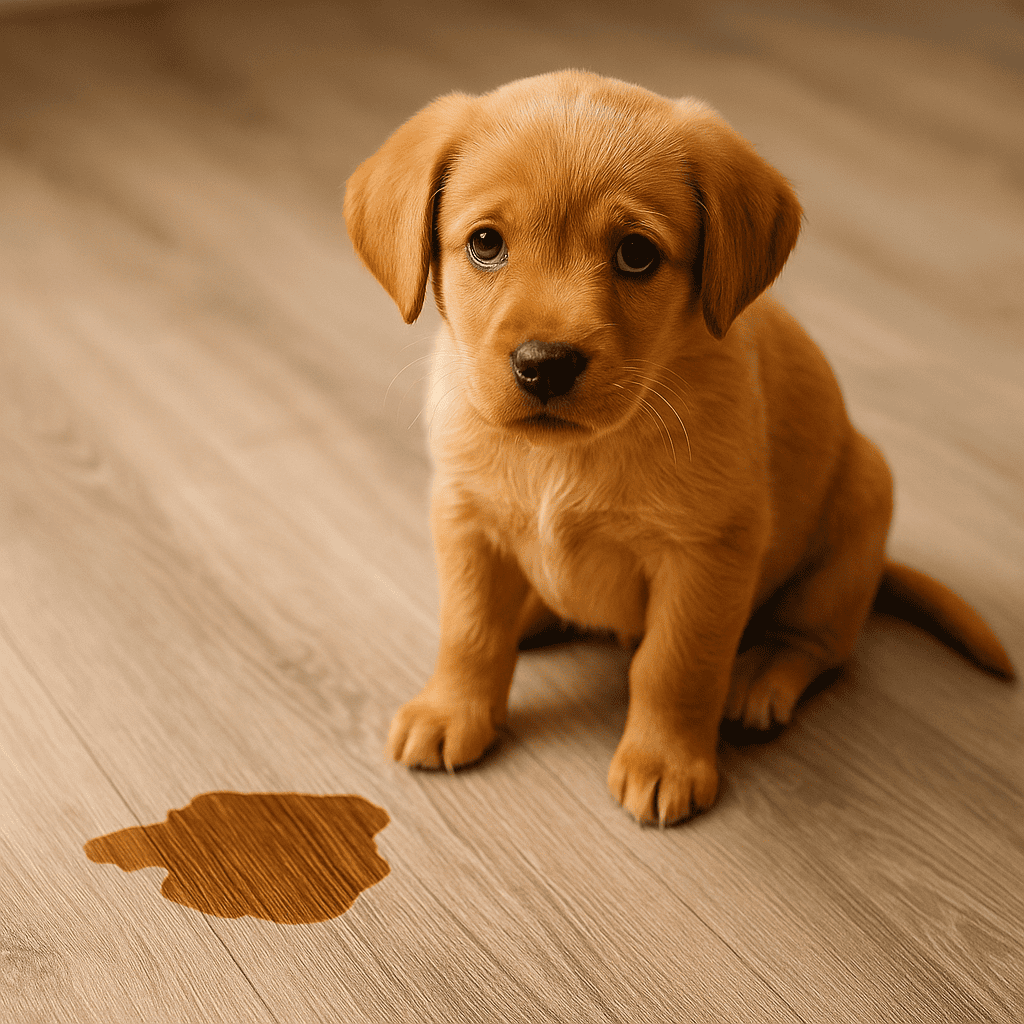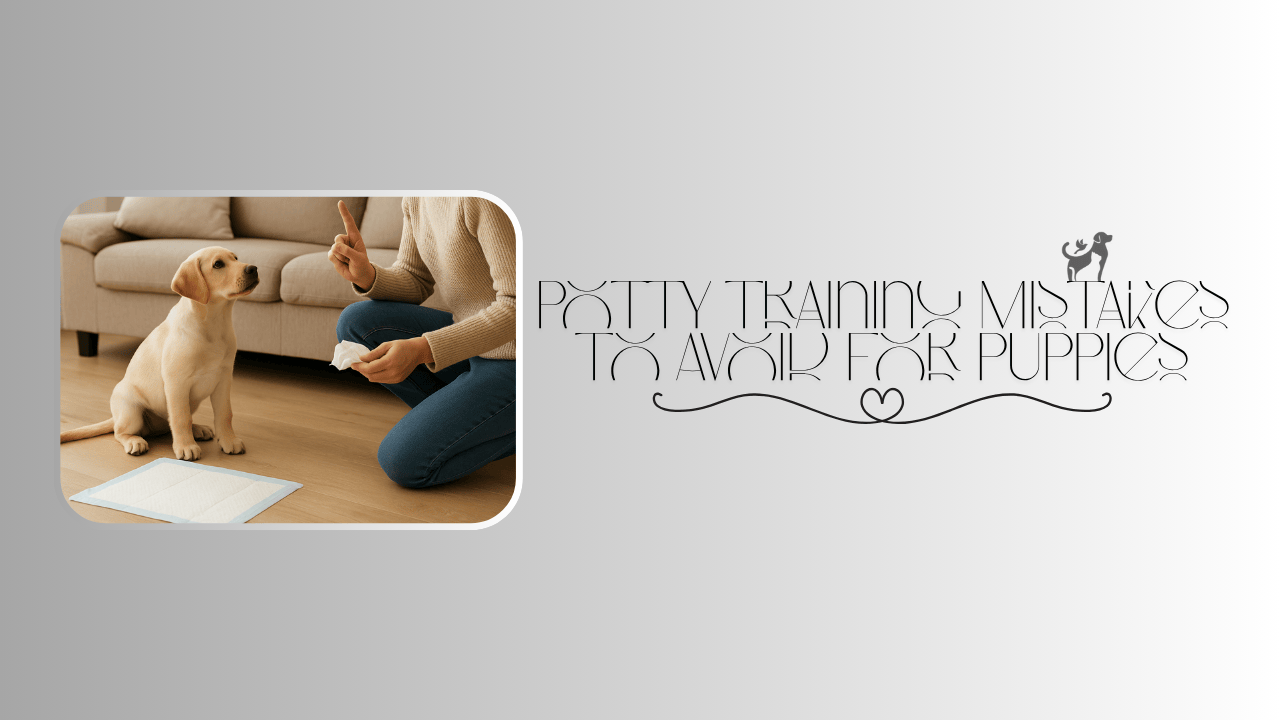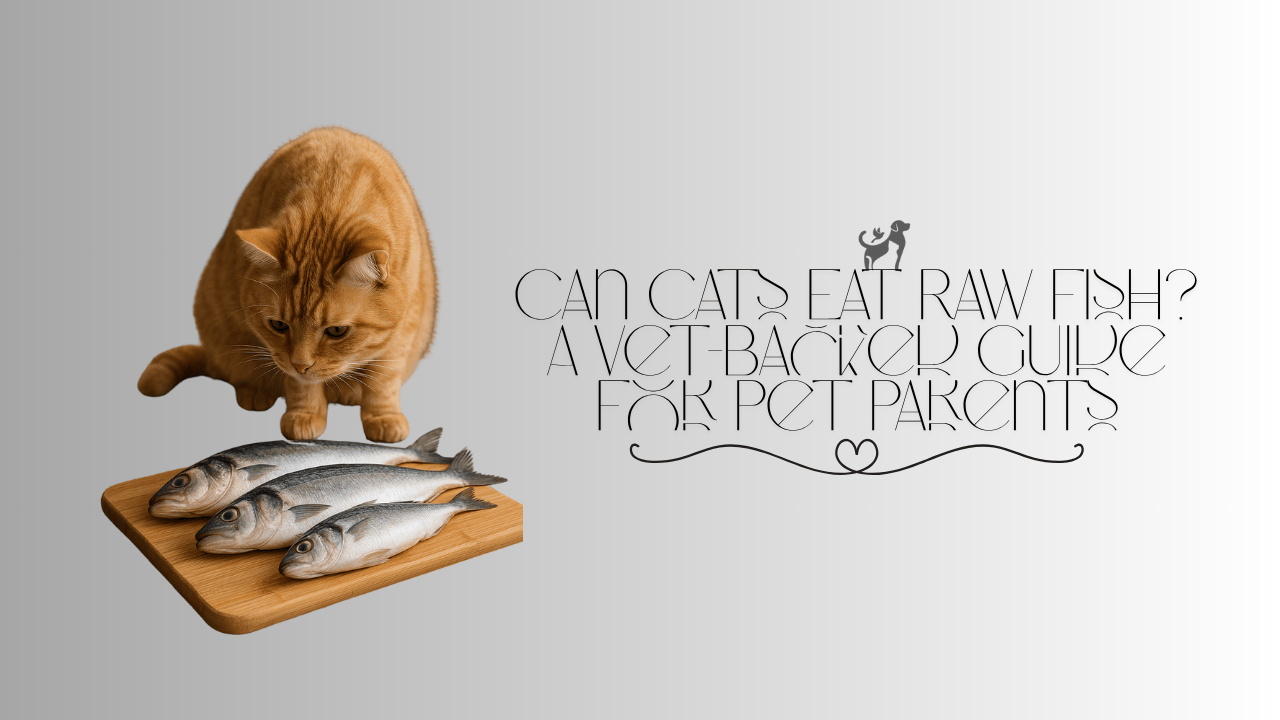Potty training is one of the first — and sometimes most frustrating — challenges new dog parents face. It seems simple: take them out, praise them, repeat. But behind the scenes, it’s a dance of timing, consistency, and communication. Even the most loving owners often make critical errors that slow progress or confuse their pups. In this guide, we’ll walk you through the most common potty training mistakes to avoid, plus offer tried-and-true advice to help you and your furry friend get it right the first time.

Why Potty Training Goes Wrong
Dogs don’t speak human — they speak patterns. If we’re inconsistent, unclear, or emotional, dogs pick up on those signals, not the words we’re saying.
According to the American Kennel Club, successful house training requires:
- Clear boundaries
- Predictable routines
- Timely rewards
- Patience (lots of it)
Let’s dive into where many owners go wrong.
Top 10 Potty Training Mistakes to Avoid
1. Inconsistent Schedules
Dogs thrive on routine. Taking your puppy out at random times or letting them wait too long between breaks creates confusion. They need structure — especially in the first few weeks.
Fix: Stick to a schedule: first thing in the morning, after meals, naps, play, and before bed.
2. Punishing Accidents
Yelling or rubbing your dog’s nose in their mess doesn’t teach them to hold it — it just teaches them to hide next time.
“My neighbor’s pug used to sneak behind the couch to potty. Turns out, he was scolded once and became afraid of being seen going indoors.”
— Leah, Fluffze reader
Fix: Clean the mess, stay calm, and refocus on supervision. Celebrate successes instead of punishing mistakes.
3. Skipping Supervision
Letting a puppy roam the house unsupervised is like giving a toddler the keys to a candy store. They’ll follow instincts — not rules.
Fix: Use gates, leashes, or keep your puppy in the same room with you. The more freedom they earn, the more they’ll understand the rules.
4. Expecting Overnight Results
Potty training takes weeks — sometimes months. Small breeds, for instance, often take longer due to tiny bladders.
Fix: Be realistic and patient. Every dog learns at their own pace.
5. Poor Timing with Rewards
If you reward your pup after they come back inside, they won’t connect the treat with pottying outdoors.
Fix: Bring treats outside and reward immediately after they finish doing their business.
6. Not Using a Crate
Crates mimic a den — dogs naturally avoid soiling where they sleep. Avoiding them removes one of your best potty training tools.
Fix: Use a properly sized crate (big enough to stand/turn, but not to potty in one corner and sleep in the other).
7. Giving Too Much Freedom Too Soon
If your dog is doing well for two days and you give them full house access, expect accidents.
Fix: Expand their freedom gradually — room by room.
8. Missing Medical Red Flags
Frequent accidents despite a consistent routine might signal a urinary tract infection, bladder issue, or dietary intolerance.
Fix: If potty training suddenly regresses or never improves, consult your vet. PetMD lists UTIs and parasites as common medical reasons behind accidents.
9. Using Harsh Cleaners
Bleach or ammonia-based cleaners can leave a scent that resembles urine — encouraging re-marking.
Fix: Use an enzymatic cleaner designed for pet messes.
10. Not Adjusting as the Dog Grows
What works for an 8-week-old won’t work for a 6-month-old. You’ll need fewer potty breaks, but also more structure and expectations.
Fix: Update your routine as your puppy matures. Phase out training pads, reinforce going outside, and increase duration between breaks.
Expert Tips for Success
- Keep a potty journal to track patterns
- Use a consistent cue like “go potty”
- Always go to the same potty spot
- Avoid water and food 2 hours before bedtime
- Reward heavily in the early days
Real-Life Insight from Dog Parents
“We used to scold our puppy for accidents, and it just made him anxious. Once we focused on rewards and supervision, things clicked fast.”
— Jen, Fluffze community member
“Crate training saved us. We used to wake up to surprises every morning — now our pup sleeps soundly and waits until morning walks.”
— Marcus, Fluffze contributor
At Fluffze.com, we’ve heard dozens of similar stories. Success isn’t about perfection — it’s about patience, praise, and prevention.
FAQ: Potty Training Tips and Mistakes
Q1: How long does potty training usually take?
Most puppies take 4–6 months, but it depends on the breed, routine, and owner consistency.
Q2: Is it okay to use puppy pads indoors?
Yes, but only short-term. Gradually transition them to outdoor potty habits to avoid confusion.
Q3: My adult dog keeps having accidents — why?
Stress, diet changes, or medical conditions could be factors. Rule out health issues with your vet.
Q4: Should I wake my puppy at night to potty?
For young puppies, yes — set a gentle alarm every 3–4 hours until they can hold it longer.
Q5: Can crate training work for older dogs?
Absolutely. Many adult dogs adjust well to crates if introduced positively.
Final Thoughts
Potty training isn’t just about stopping accidents — it’s about teaching your dog to trust you, understand routines, and feel confident in their environment. By avoiding these common potty training mistakes, you’re not just speeding up the process — you’re also building a lifelong foundation of trust and communication.
Every dog is different, but consistency, clarity, and calm reactions will always lead you in the right direction.
Call-to-Action
Was this guide helpful?
Share it with new dog parents, or explore more dog training tips, product reviews, and wellness advice at Fluffze.com. Your pup will thank you — and so will your carpet.
Written by
Written by Shawn, pet lover & contributor at Fluffze
Shawn is a dog trainer and rescue volunteer who has helped dozens of families potty train with patience and positive reinforcement.
Related Articles:
How to Train a Dog to Use a Litter Box: Simple Steps That Work
Crate Training Mistakes to Avoid: Setting Your Dog Up for Success
Homemade Pet Safe Cleaning Solutions: A Healthier Way





